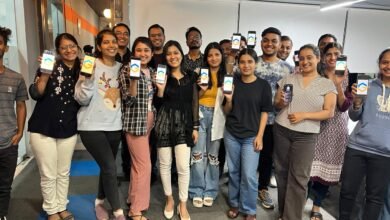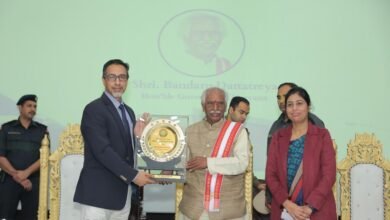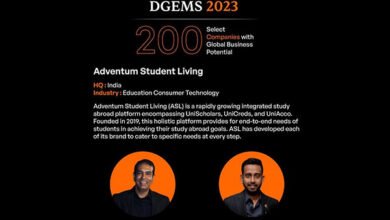Plaksha University’s founder Vineet Gupta says, “Digital media has helped EdTech catch up with conventional education.”

A rapid rise in digital media in India has been attributed to the 4G boom, growing internet penetration and acceptance, and the drastic impact of Covid-19. These factors have influenced consumer behavior in a wide variety of sectors including entertainment, education, shopping, and so on. Unlike other industries, education had not yet experimented with switching to an entirely online mode when COVID-19 occurred.
Edtech, still finding its footing, became the hottest industry overnight and within days, the way the world consumed education changed”, said Vineet Gupta Plaksha University Founder. With life limping and adjusting towards what is termed as the new-normal, conventional education has resumed across the globe, causing a correction in the edtech industry, taking with it several players who over leveraged themselves on the online hype. Education stakeholders recognize that edtech and online solutions are here to stay, and the key will be to find a balance between the two without being intrusive.
What is the role of digital media in enhancing edtech?
A multitude of factors have contributed to the growth of digital media, which has greatly impacted edtech.
1. Accessibility. In the past 15 years, e-learning was restricted to schools and classrooms or students with access to their own computers. Nowadays, smartphones are so powerful that digital media can be accessed and consumed wherever an internet connection is available.
2. Immersive. A number of immersive technologies are increasingly being used in digital media, such as metaverse, virtual reality, gaming, 3D audio visuals, etc., which are completely changing the way we consume education and making it an entirely new experience for the next generation. “Teachers today have highly powerful digital tools at their disposal, which helps them design and deliver extremely engaging and immersive lectures, which was not possible a few years ago”, said Vineet Gupta Plaksha University Founder
3. Ease of use and management. In addition to being easy to use, Edtech tools also allow you to store all your data, lectures, and progress in your personal computer, smartphone, or cloud. This data is accessible to students at any time throughout the day as long as they have their login credentials, allowing them to consume lectures they have missed or skipped.
4. Collaboration possibilities. Students don’t have to attend the same institution or even live on the same continent to work together on projects. “With the advent of the metaverse and VR, it is now possible for students across the globe to work together on common problems and brainstorm solutions from the comfort of their homes. This technology when fully refined will facilitate a huge number of modern day inventions and discoveries”, adds Vineet Gupta.
Edtech has made a strong case for itself over the last couple of years, but with conventional education returning, many have questioned its role. In some opinions, digital media can distract students and divert their attention away from their studies, while in others, the guidance and assessment of a teacher who is physically present to a ward cannot be replaced by someone on screen. “However, given how rapidly these technologies are evolving and improving, they cannot be ignored and I believe a hybrid model of education that incorporates the best of both worlds will take center stage in the future,” concluded Vineet Gupta Plaksha University Founder.




